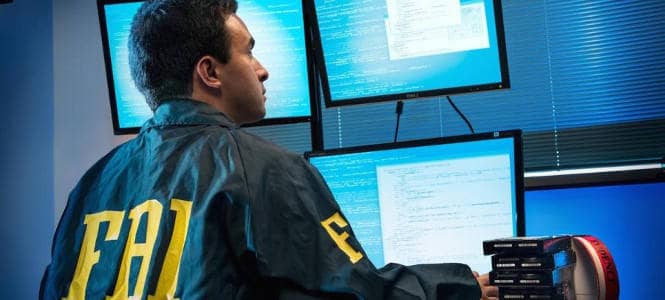

In California, as in every state in the country, it is illegal to both distribute and possess child pornography. To ensure that you do not run afoul of these strictly enforced laws, it is important to understand what both distribute and possess mean in the context of child pornography. However, it is also important to understand what exactly is meant by child pornography, which is where we will begin.
In California, child pornography is defined under California Penal Code 311.11(a) as any material depicting a person under the age of 18 personally engaging in or simulating sexual conduct.
Penal Code 311.11(a) elaborates on what it means f. Callor a person to possess material of this nature. In pertinent part, Penal Code 311.11(a) states, “Every person who knowingly possesses or controls any matter, representation of information, data, or image, including, but not limited to, any film, filmstrip, photograph, negative, slide, photocopy, videotape, video laserdisc, computer hardware, computer software, computer floppy disc, data storage media, CD-ROM, or computer-generated equipment or any other computer-generated image that contains or incorporates in any manner, any film or filmstrip…” is considered to be in possession of such material. As can be seen from the extensive list of materials, including such retro technologies as laser disc and floppy discs, this law is meant to be as broadly defined as possible.
Similarly broad is the definition of “sexual conduct” that is used. California Penal Code 311.11(a) points to an additional Penal Code to provide this definition. Under California Penal Code 311.4(d)(1), “sexual conduct” is said to mean any of the following acts: “sexual intercourse, oral copulation, anal intercourse, anal oral copulation, masturbation, bestiality, sexual sadism, sexual masochism, penetration of the vagina or rectum by any object in a lewd or lascivious manner, exhibition of the genitals or pubic or rectal area for the purpose of sexual stimulation of the viewer, any lewd or lascivious sexual act as defined in Section 288, or excretory functions performed in a lewd or lascivious manner, whether or not any of the above conduct is performed alone or between members of the same or opposite sex or between humans and animals.” To make this even broader, this definition applies to all listed acts, whether actual or simulated in nature. So, even if the sexual acts depicted are not happening in reality, but are merely being simulated, this still counts as a violation of the law.
In addition to its broad construction, possession of child pornography in California carries with it strict penalties. Also, anyone convicted of such will also be a lifetime member of California’s sex offender registry. Prior to 2006, the possession of child pornography was a misdemeanor offense. However, after the passage of The Sexual Predator Punishment and Control Act (Proposition 83 in California), the crime was reclassified. Now, it is a “wobbler” and can be prosecuted as either a felony or a misdemeanor. A second offense is prosecuted only as a felony.
If you are found guilty of “possession of child pornography”, you may face:
Given the heinousness of the crime, it is easy to condemn and mentally convict anyone accused of child pornography charges before they even get to present their facts. Because of the visceral response to the mistreatment or abuse of children, it is even more important to remember that we live in a nation of laws, and not everyone accused of possessing child pornography has broken the law. In fact, there are a number of established legal defenses to these charges.
First, a key element to possession of child pornography PC 311.11(a) is that the possession of the material must be “knowing.” Therefore, if a person unknowingly comes into possession of such material, this is a defense to the charges. In our current era, it is not outside the realm of possibility for someone to unknowingly be in possession of child pornography. For example, there are types of computer viruses and other hacking techniques that can give someone access to another’s IP address or computer. Once a person’s identifying information or computer has been compromised, it could potentially be used by savvy criminals to engage in the transmission or downloading of child pornography so as to evade detection. If it can be proved that there was no knowledge on the part of the accused, then this is a complete defense to the charges. There is no crime without knowledge.
A second common defense involves the element of possession of child pornography. Without possession, there is no crime under Penal Code 311.11(a). An example of such a scenario is if a person receives the child pornography unsolicited, and upon discovering that it does contain pornographic material related to children, immediately destroys it or reports it to law enforcement. In such a scenario, this constitutes a justifiable defense to the possession of child pornography charges. In discussing this type of possession of child pornography in other, similar contexts, the Supreme Court of California stated that “the act of handling a narcotic for the sole purpose of disposal” did not constitute possession. People v. Mijares, 6 Cal.3d 415, 417 (1971). Similarly, the California Supreme Court stated that a person’s momentary control of a firearm for the purpose of disposal or self-protection is a defense to possession charges. People v. Hurtado, 47 Cal.App.4th 805, 814 (1996). Furthermore, under federal law, if one promptly and in good faith destroys or reports to law enforcement the offending images, this represents an affirmative defense. see 18 U.S.C. 2252(c)(2). Therefore, used in the context of child pornography, this type of inadvertent control over and quick destruction of such material represents a sound defense.
A third defense involves the possession of material that is not in fact child pornography. This would seem obvious, but bears a closer look. What this means is that while material may appear to evidence the sexually explicit images or videos of a person under the age of 18, this still must be proven beyond a reasonable doubt by the prosecution. If it cannot be proven that the individual involved is in fact under the age of 18, then the material cannot be considered child pornography. This goes for material that involves image manipulation as well. This involves manipulated images that have the head of a minor placed over that of an adult engaged in sexually explicit acts. As the image has been manipulated, and does not in fact show an actual minor engaged in the acts, this is not sufficient to constitute a violation under possession of child pornography PC 311.11(a). Similar to both of these examples is artistic content. Artistic renderings, such as paintings or statues, as well as films protected and exempted by the Motion Picture Association of America, do not fall under the purview of Penal Code 311.11(a) and are not considered pornographic content.
Lastly, a defense that can be employed, though not a defense to the actual crime itself, involves procedural misconduct on the part of law enforcement. Crimes involving child pornography will inherently involve computer hard drives or other private, personal devices. In addition, because of the seriousness and pervasiveness of such crimes, there is a heavy police presence in sting operations. Given both of these realities, the potential for police overreach is present. As such, a possible defense could involve throwing out incriminating evidence seized through an illegal search or gotten through police entrapment. The first scenario would involve an infringement of a person’s Fourth Amendment rights, while the second would involve law enforcement encouraging a person to commit a crime they otherwise would not have. While this could be achieved through posing as a minor and transmitting sexually explicit material involving minors to an individual and then making an arrest, a more likely scenario involves inducing a person to purchase pornographic material that was not labeled as child pornography and then arresting the individual.
This list of defenses is not meant to be exhaustive, merely illustrative of how one could find themselves in the possession of child pornography. However, an increasingly more frequent scenario is discussed below.
The breadth demonstrated within these penal codes and the harshness of the penalties highlight the severity with which the people of California view these crimes. This is with good reason. The history of child abuse, exploitation, molestation, and rape is vast and dark. Often, as a society we like to assure ourselves that these are crimes that we are outgrowing as we advance as a society. However, the evidence is all around us that this is not the case. As technology quickens its advance at an ever-rapid pace, laws protecting the most vulnerable among us need to be able to keep pace as well. This explains the good intentions behind the painting of these criminal definitions with such a broad brush. It also allows for the heavy-monitoring and quick-response of law enforcement to child pornography violations. For example, law enforcement agencies actively monitor websites heavily frequented by child pornography consumers and disseminators. If images or videos are downloaded, the IP addresses of the offenders can be tracked and the offenders located.
However, because the laws in place to address child pornography in the digital age are so broad, there are unforeseen consequences, especially for California teens with cell phones.
I would wager that if I asked you to picture in your mind what someone possessing child pornography looks like, you would not be picturing your son or niece currently attending high school. However, as is being seen more and more, these are the people being ensnared in the criminal justice system for violating child pornography laws.
I am speaking, of course, of what is known as “sexting,” or sending naked or sexually explicit photos of one’s self to another. As noted in the April, 2018 JAMA Pediatrics study into the matter, approximately one out of every four teenagers has received a sext, while approximately one in seven teenagers have sent one. While this may sound ludicrously high, the JAMA study took into account 39 different studies with 110,380 participants. So, from this broad base of data, these numbers are most likely representative of the population.
Even more confounding to the general public regarding sexting and child pornography is the fact that even sexually explicit images sent between two, consenting teenagers who are dating is considered a violation of California Penal Code 311.11(a).
With this many of California and our nation’s teens either disseminating or being in possession of sexually explicit material of individuals under the age of 18, it is no surprise then that more and more of these teens are facing prosecution and a threat to their future. If this seems like a bad joke, I assure you it is not. More teens are finding themselves vulnerable to a scenario where they are prosecuted under possession of child pornography PC 311.11(a) for felony child pornography, sentenced to juvenile detention, followed by a transfer to prison upon reaching the age of 18, and stigmatized with a lifelong registration on the sex offender list.
If you or a loved one has been charged with possession of child pornography (PC 311.11a) in the California area, we invite you to contact us immediately for a free case review. Our experienced and assiduous Criminal Defense Attorneys will be sure to fight until the end to achieve the desired results.
Call LAW MART for a FREE Case Review: 310-894-6440

Copyright © 2024 law – Powered by AmelCS